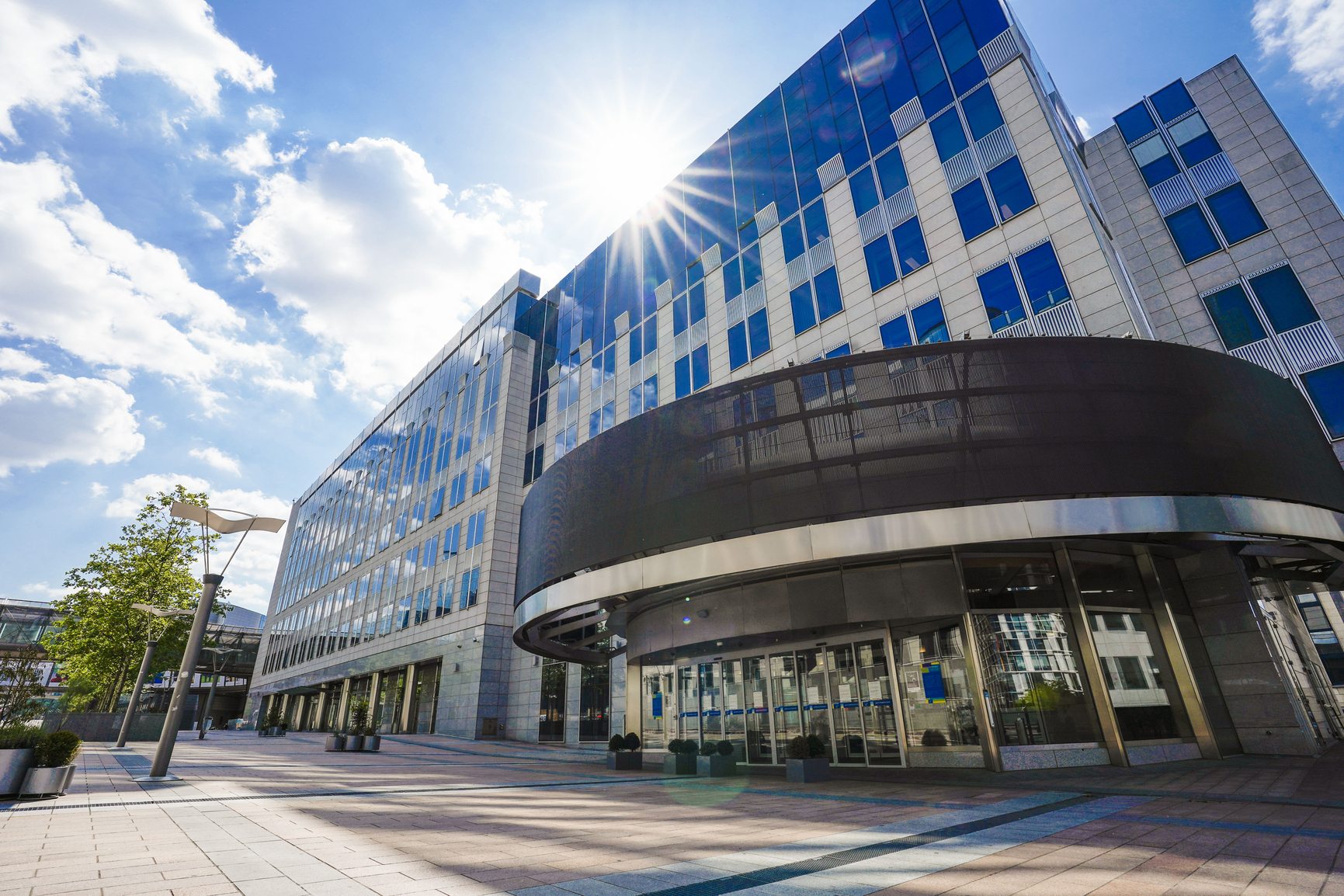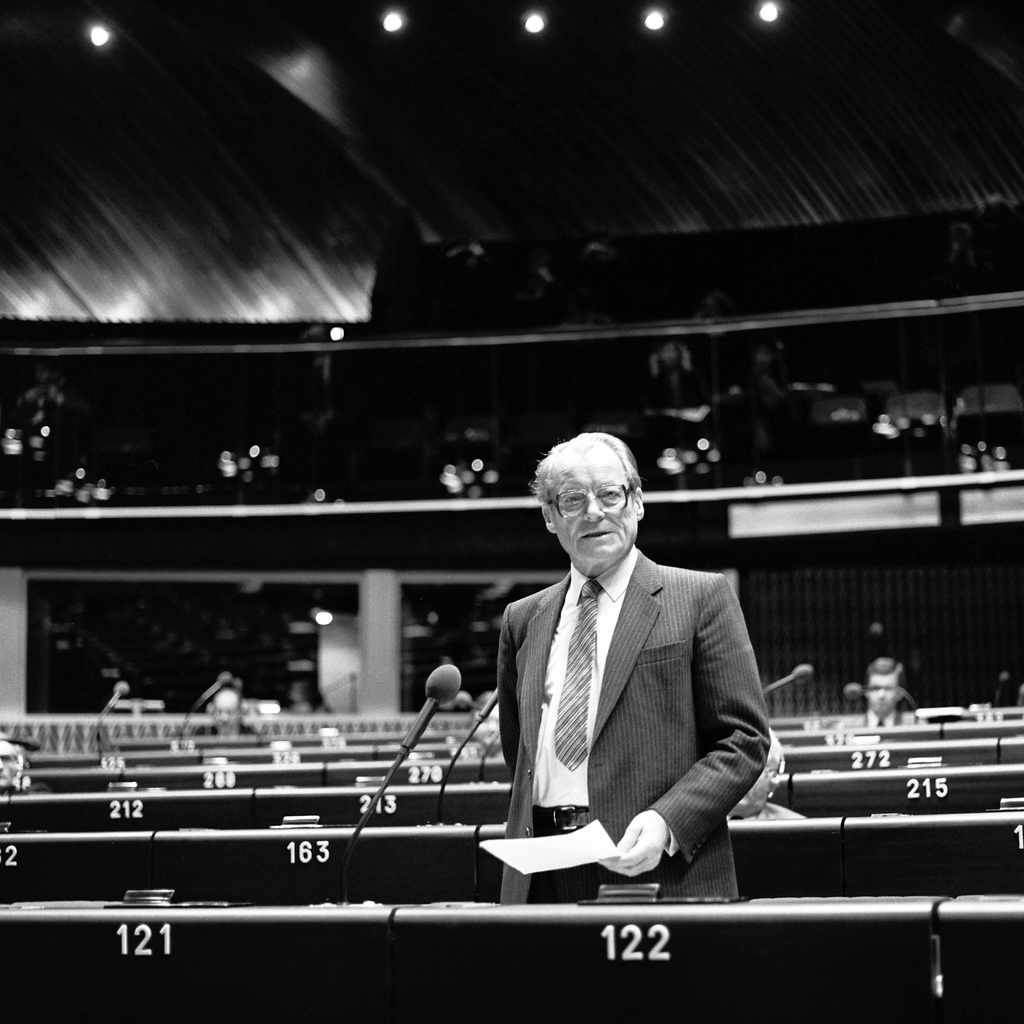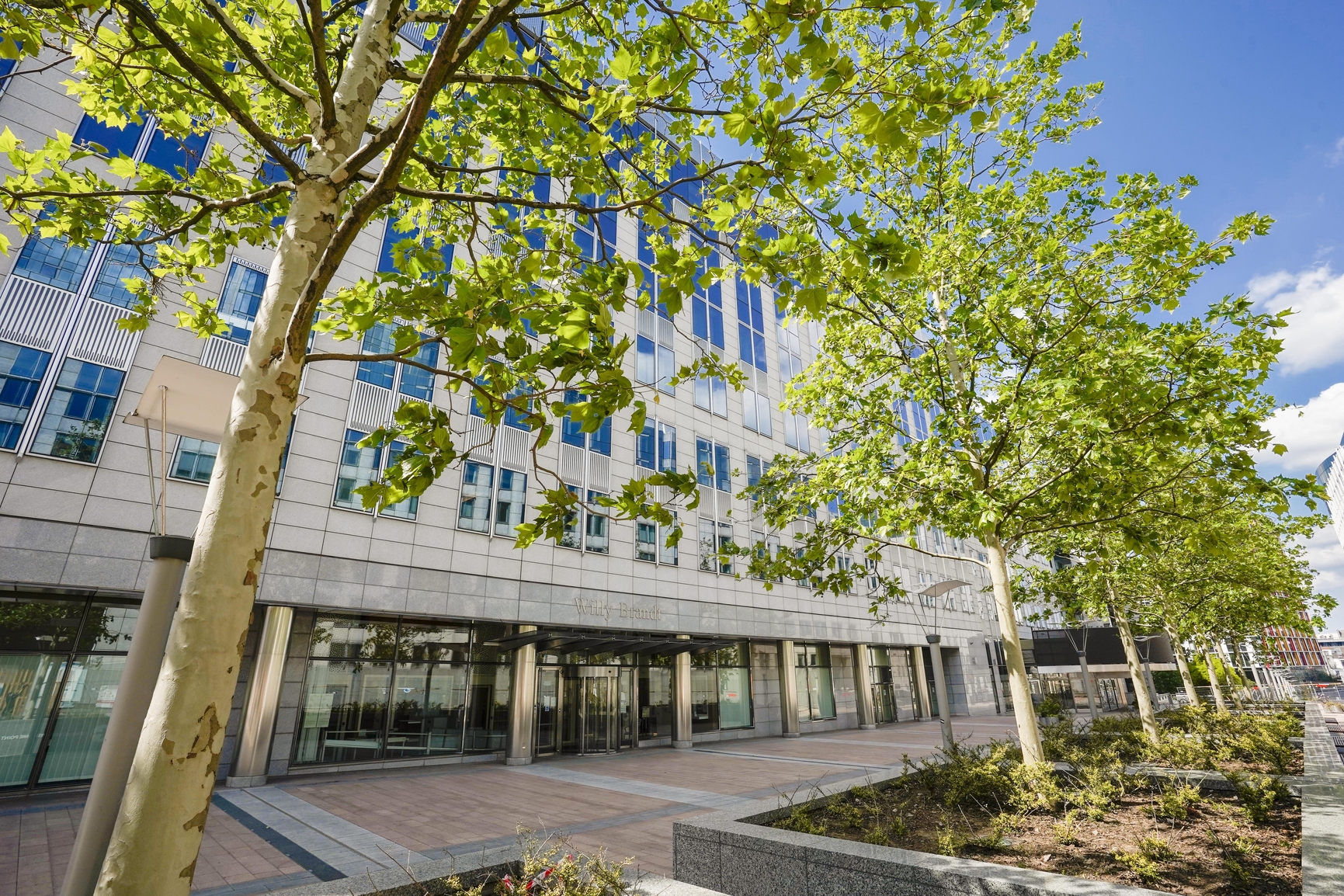The German Chancellor who won the Nobel Peace Prize for his policy of openness to the Eastern Bloc
Willy Brandt was born Herbert Ernst Karl Frahm in Lübeck, Germany. His father John Möller was a teacher, but Herbert never took his name, and nor did he ever seek his father out. He bore the name of his mother, Martha Frahm, who was just 19 when she gave birth to him. Ludwig Frahm, Martha’s stepfather, was an active member of the German Social Democratic Party (SPD). Ludwig introduced Herbert to politics: in 1929 he joined the Socialist Youth wing of the SPD, before moving to the Socialist Workers’ Party in 1931.
After Adolf Hitler came to power in 1933, Herbert Frahm adopted a pseudonym, Willy Brandt, in order to attend an illegal party meeting. He was then forced to flee Nazi Germany, travelling to Denmark before settling in Norway.
 Summer Season - EP Headquarters in Brussels - Brandt building © European Union 2020 – European Parliament
Summer Season - EP Headquarters in Brussels - Brandt building © European Union 2020 – European Parliament
Forced exile
In autumn 1934, Brandt travelled to Germany in secret, posing as Gunnar Gaasland, a Norwegian student. Towards the end of the 1930s he worked as a journalist, covering the war in Spain. He then applied for Norwegian citizenship as the Nazi regime had revoked his German citizenship. He became a Norwegian citizen in 1940. That year, Brandt was arrested in Norway by the occupying German forces, but was not identified as a German because he was wearing a Norwegian uniform. He then fled to neutral Sweden, obtaining a passport from the Norwegian Embassy in Stockholm. He lived in Sweden until the end of the war. After that, Brandt returned to Germany to attend the Nuremberg trials as a correspondent for the Scandinavian press, and then worked as a press officer at the Norwegian Embassy. He remained in Germany from then on.
 MEP Willy Brandt during a session in Strasbourg in November 1981 © European Communities 1981 – European Parliament
MEP Willy Brandt during a session in Strasbourg in November 1981 © European Communities 1981 – European Parliament
Home again
Brandt finally moved back to Berlin in 1946, becoming a German citizen once again in 1948. He was soon elected to the Bundestag, before serving as Mayor of Berlin during a turbulent period for both the German capital and the country as a whole. The Berlin Wall was built in 1961, during his term of office. He was ‘the only one’ to roundly condemn it.
The same year Brandt stood for Chancellor as the SPD’s candidate, but was pipped to the post by another prominent German: Konrad Adenauer. Brandt tried – unsuccessfully – to become Chancellor a number of times in the following years, and finally made it in 1969, when his party entered a coalition with the CDU. His election was a turning point for Germany: for the first time since the end of the Second World War and the foundation of the Federal Republic of Germany, the country had a Social-Democrat Chancellor.
Brandt’s foreign policy
Brandt’s foreign policy of Ostpolitik was very much centred around the GDR and Eastern Europe, but it was also highly controversial. It would make him famous, however, and earn him the Nobel Prize. He was keen to secure Germany’s place on the European stage, in particular when it came to issues concerning the enlargement of the European Community and détente with neighbours in Central and Eastern Europe. He was also committed to securing freedom for Berlin and German reunification. On the other hand, Brandt was sceptical about plans to establish a European defence community.
The cornerstones of the Ostpolitik that Brandt established in the 60s and 70s would, in time, become reality: the reunification of East and West Germany, the establishment of a European Union, and the inclusion of the countries of central and eastern Europe in the structures of European integration following the fall of the Berlin Wall.
Willy Brandt was a Member of the European Parliament between 1979 and 1983, and one of Parliament’s buildings in Brussels bears his name.
 Summer Season - EP Headquarters in Brussels - Brandt building © European Union 2020 – European Parliament
Summer Season - EP Headquarters in Brussels - Brandt building © European Union 2020 – European Parliament